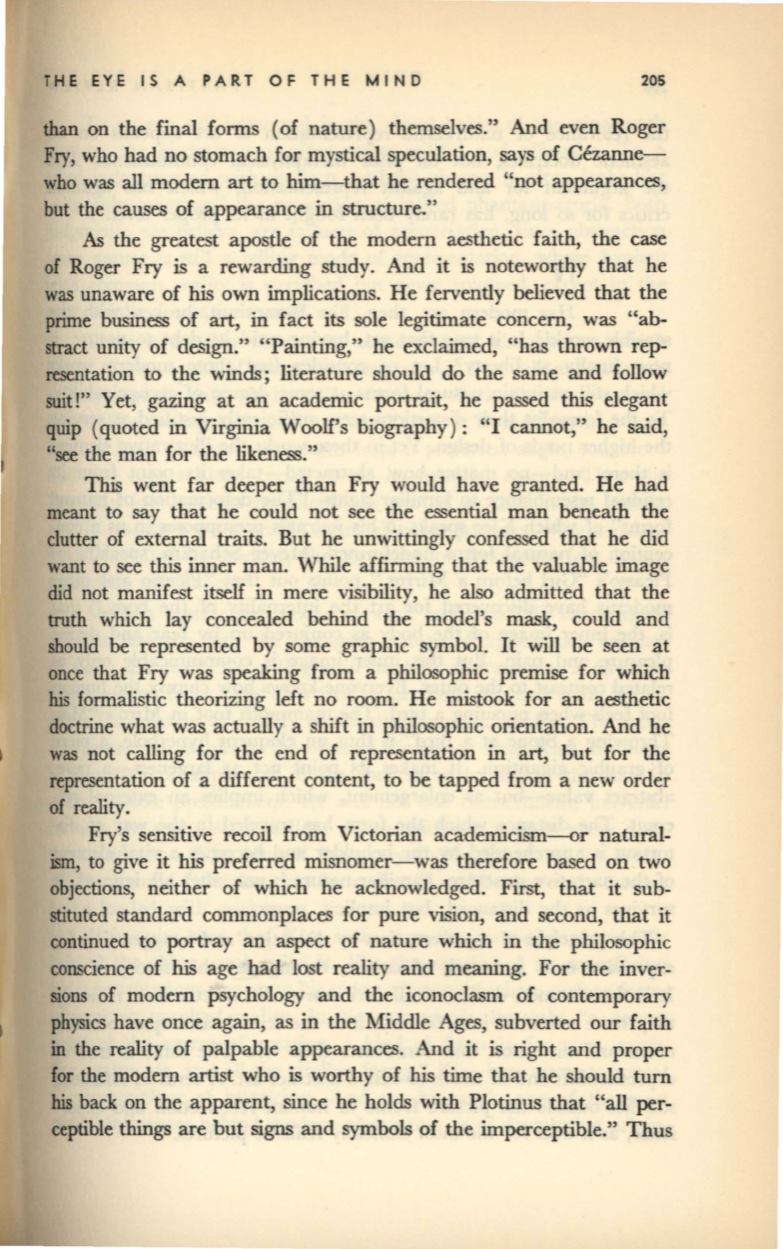
THE EYE IS A PART OF THE MIND
205
than
on the final forms (of nature) themselves." And even Roger
Fry, who had no stomach for mystical speculation, says of Cezanne–
who was
all
modem
art
to him-that he rendered "not appearances,
but the causes of appearance in structure."
As
the greatest apostle of the modem aesthetic faith, the case
of Roger Fry
is
a rewarding study. And it is noteworthy that he
was unaware of his own implications. He fervently believed that the
prime business of
art,
in fact its sole legitimate concern, was "ab–
stract unity of design." "Painting," he exclaimed, "has thrown rep–
resentation to the winds; literature should do the same and follow
suit!" Yet, gazing at an academic portrait, he passed this elegant
quip (quoted in Virginia Woolf's biography): "I cannot," he said,
"see the man for the likeness."
This went far deeper than Fry would have granted. He had
meant to say that he could not see the essential man beneath the
clutter of external traits. But he unwittingly confessed that he did
want to see
this
inner man. While affirming that the valuable image
did not manifest itself in mere visibility, he also admitted that the
truth which lay concealed behind the model's mask, could and
should
be
represented by some graphic symbol. It will be seen at
once that Fry was speaking from a philosophic premise for which
his
formalistic theorizing left no room. He mistook for an aesthetic
doctrine what was actually a shift in philosophic orientation. And he
was not calling for the end of representation in
art,
but for the
representation of a different content, to be tapped from a new order
of reality.
Fry's sensitive recoil from Victorian academicism--or natural–
mo,
to give it
his
preferred misnomer- was therefore based on two
objections, neither of which he acknowledged. First, that it sub–
stituted standard commonplaces for pure vision, and second, that it
continued to portray an aspect of nature which in the philosophic
conscience of
his
age had lost reality and meaning. For the inver–
sions of modem psychology and the iconoclasm of contemporary
physics have once again, as in the Middle Ages, subverted our faith
in
the reality of palpable appearances. And it is right and proper
for the modem artist who is worthy of his time that he should tum
his
back on the apparent, since he holds with Plotinus that "all per–
ceptible things are but signs and symbols of the imperceptible." Thus


